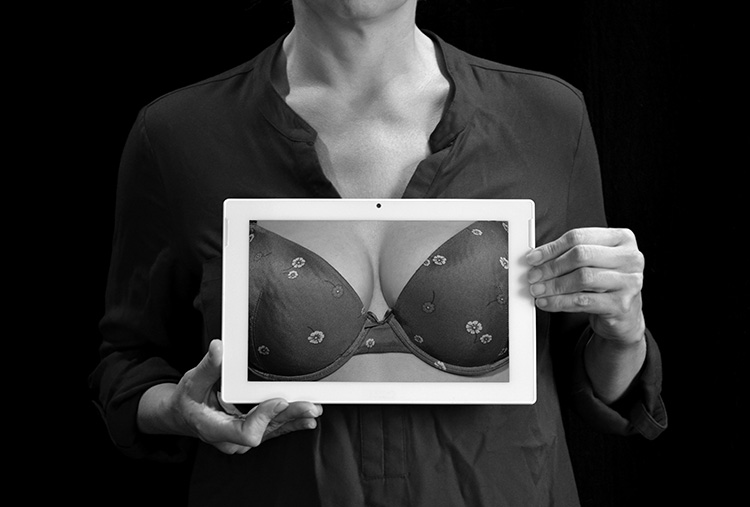Every breast lift technique creates a circular incision around the nipple / areola. This allows the nipple to be repositioned on the breast and the areolar diameter to be reduced if necessary. Structures leading to the nipple including nerves, blood vessels and milk ducts are preserved in a breast lift. The remaining incisions are dependant upon your breasts, their shape, your skin quality and your expectations. A personalised surgical plan based on your individual anatomy will be discussed with you once you have been clinically assessed. In general the types of incisions that may be used are discussed below.
- Inverted T Technique
The most common procedure for a breast lift involves an incision around the nipple and areola, a vertical incision from the bottom of the areola down to the inframammary fold (IMF), and a short scar that lies within the IMF. These incisions are shorter than the traditional anchor scar that is commonly described, more like a champagne glass than an anchor!
The inverted T technique allows a three-dimensional reshaping of the breast and often produces the most perky breast shape. The nipple / areola are moved on a piece of breast tissue that carries blood vessels, nerves and ducts to them. Maintaining these structures helps to preserve nipple function after surgery.
The inframammary scar is hidden when viewing the breasts from above or from the front and is concealed in bras and bikinis. It is usually only visible when the breasts are lifted. The vertical incision generally fades to be virtually imperceptible, and the areolar scar lies at the natural junction of the pigmented areola and surrounding breast skin and therefore usually blends in.
- Vertical Scar (Lollipop Scar)
If you have little excess skin and the nipple only needs lifting a little, a vertical scar technique can be used. This creates a scar around the nipple and vertically down the breast without the horizontal component. Like in the inverted T the blood supply, nerve supply and ducts of the nipple are maintained. The benefits of this technique are the reduced scars however it is not appropriate for cases where there is more excess and a reduction of the breast envelope is required.
- Periareolar Technique
In a few cases, a very subtle lift of the nipple is needed for one or both breasts. The periareolar technique uses an incision around the areola (the pigmented circle surrounding the nipple). This technique does not address excess skin or allow major reshaping of the breast. However, a small periareolar lift can be added to a breast augmentation when the nipple requires minor repositioning.
